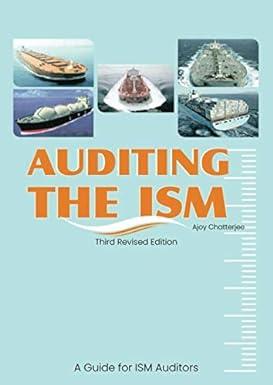Question
Hank, a calendar-year taxpayer, uses the cash method of accounting for his sole proprietorship. In late December, he performed $12,000 of legal services for a
Hank, a calendar-year taxpayer, uses the cash method of accounting for his sole proprietorship. In late December, he performed $12,000 of legal services for a client. Hank typically requires his clients to pay his bills immediately upon receipt. Assume his marginal tax rate is 32 percent this year and will be 35 percent next year, and that he can earn an after-tax rate of return of 12 percent on his investments. Use Exhibit 3.1.
a. What is the after-tax income if Hank sends his client the bill in December?
b. What is the after-tax income if Hank sends his client the bill in January? (Do not round intermediate calculations. Round your answer to the nearest whole dollar amount.)
c. Should Hank send his client the bill in December or January?
-
December
-
January
d. What is the after-tax income if Hank expects his marginal tax rate to be 24 percent next year and sends his client the bill in January? (Do not round intermediate calculations. Round your answer to the nearest whole dollar amount.)
e. Should Hank send his client the bill in December or January if he expects his marginal tax rate to be 32 percent this year and 24 percent next year?
-
December
-
Janu
Hank, a calendar-year taxpayer, uses the cash method of accounting for his sole proprietorship. In late December, he performed $23,000 of legal services for a client. Hank typically requires his clients to pay his bills immediately upon receipt. Assume his marginal tax rate is 32 percent this year and will be 37 percent next year, and that he can earn an after-tax rate of return of 6 percent on his investments.
a. What is the after-tax income if Hank sends his client the bill in December?
b. What is the after-tax income if Hank sends his client the bill in January? Use Exhibit 3.1. (Round your answer to the nearest whole dollar amount.)
c. Based on requirements a and b, should Hank send his client the bill in December or January?
-
December
-
Manny, a calendar-year taxpayer, uses the cash method of accounting for his sole proprietorship. In late December he performed $10,000 of legal services for a client. Manny typically requires his clients to pay his bills immediately upon receipt. Assume Mannys marginal tax rate is 37 percent this year and next year, and that he can earn an after-tax rate of return of 8 percent on his investments.
a. What is the after-tax income if Manny sends his client the bill in December?
b. What is the after-tax income if Manny sends his client the bill in January? Use Exhibit 3.1. (Round your answer to the nearest whole dollar amount.)c. Based on requirements a and b, should Manny send his client the bill in December or January?
-
December
-
January
-
Manny, a calendar-year taxpayer, uses the cash method of accounting for his sole proprietorship. In late December he performed $45,000 of legal services for a client. Manny typically requires his clients to pay his bills immediately upon receipt. Assume Mannys marginal tax rate is 37 percent this year and next year, and that he can earn an after-tax rate of return of 10 percent on his investments.
a. What is the after-tax income if Manny sends his client the bill in December?
b. What is the after-tax income if Manny sends his client the bill in January? Use Exhibit 3.1. (Round your answer to the nearest whole dollar amount.)
c. Based on requirements a and b, should Manny send his client the bill in December or January?
-
December
-
January
-
January
Manny, a calendar-year taxpayer, uses the cash method of accounting for his sole proprietorship. In late December he performed $10,000 of legal services for a client. Manny typically requires his clients to pay his bills immediately upon receipt. Assume Mannys marginal tax rate is 37 percent this year and next year, and that he can earn an after-tax rate of return of 8 percent on his investments.
a. What is the after-tax income if Manny sends his client the bill in December?
b. What is the after-tax income if Manny sends his client the bill in January? Use Exhibit 3.1. (Round your answer to the nearest whole dollar amount.)
c. Based on requirements a and b, should Manny send his client the bill in December or January?
-
December
-
January
Step by Step Solution
There are 3 Steps involved in it
Step: 1

Get Instant Access to Expert-Tailored Solutions
See step-by-step solutions with expert insights and AI powered tools for academic success
Step: 2

Step: 3

Ace Your Homework with AI
Get the answers you need in no time with our AI-driven, step-by-step assistance
Get Started


